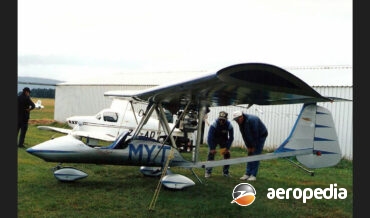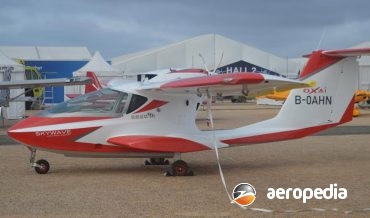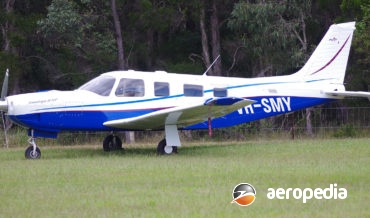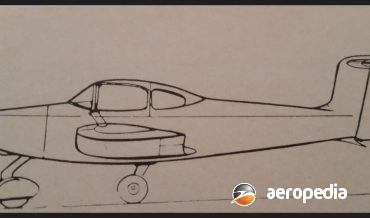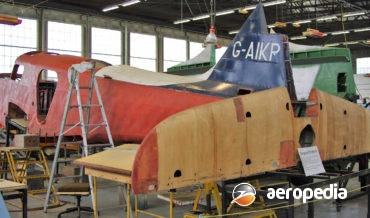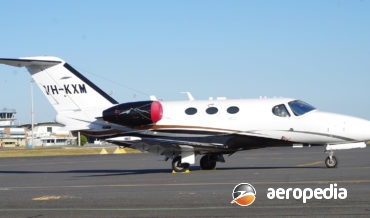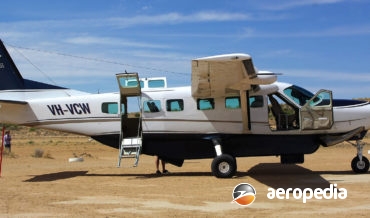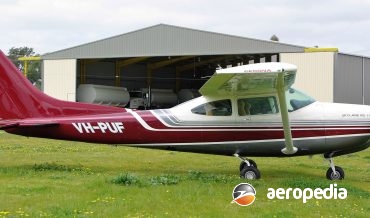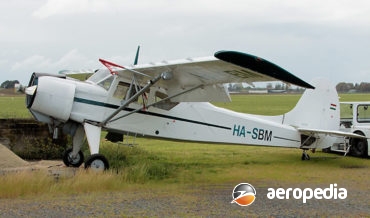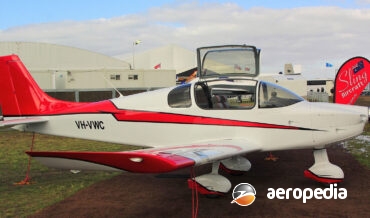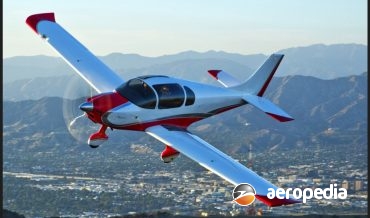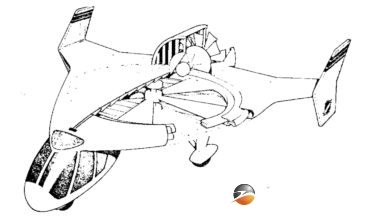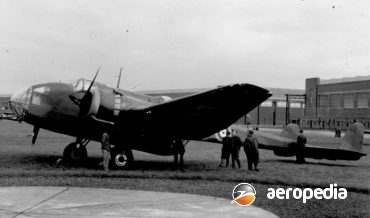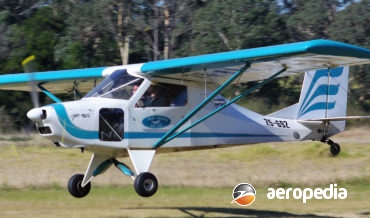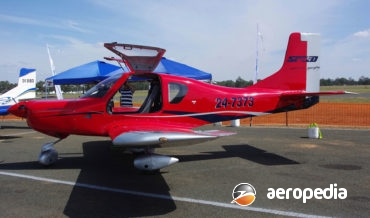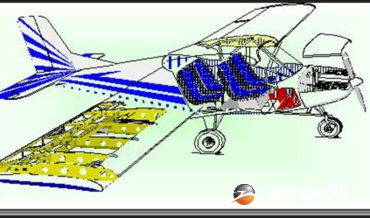David C. Eyre
A Mr Woolfrey commenced construction of an aircraft in the Wollongong area, the aircraft being of timber construction with fabric covering. It is not thought to have flown.
David C. Eyre
- May 25, 2020
The Swing Wing was designed by Colin Winton to meet Regulation 95-10. It is a three-axis ultra-light aircraft seating the pilot in a single-seat and is a high-wing monoplane fitted with a Rotax 277 engine in a pusher configuration.
David C. Eyre
- May 25, 2020
The Solitaire is one of a number of aircraft designed by Colin Winton and produced by Winton Aircraft of Coomera, Qld for the ultra-light market, production of aircraft by the Company commencing in about 1976.
David C. Eyre
- May 25, 2020
One of many ultralight aircraft designs of Colin Winton and his son Scott and this was the second in a line of aircraft aimed at the market and followed the Grasshopper.
David C. Eyre
- May 25, 2020
This was another of a whole range of ultralight designs produced by Colin Winton of Coomera, Qld for the ultra-light aircraft market.
David C. Eyre
- May 25, 2020
Department records indicate that in the 1920s a Mr James Winstone of Collingwood, Vic, built an aircraft and sought information about having it registered.
David C. Eyre
- May 25, 2020
The Windlass Trike, a powered hang-glider with a tricycle undercarriage, and a fibreglass fuselage to take one or two persons, has been built in some numbers around the world in a variety of models.
David C. Eyre
- May 25, 2020
This gyrocopter (registered G-395) was a freelance design fitted with a Subaru EJ-25 four-cylinder engine of 119-kw (160-hp) and fitted with 8.53 m (28-ft) diameter Patroni Glasrotor blades and a 1.93 m (76-inch) Ivo propeller.
David C. Eyre
- May 25, 2020
The Jackaroo was a high-wing ultralight designed in the early 1980s for the Australian market. It had a pod fuselage, a tricycle undercarriage and a tractor mounted modified 1200-cc Volkswagen engine.
David C. Eyre
- May 25, 2020
This light single-engine open-cockpit monoplane commenced life as a Taylor Monoplane. It was completed by Mr Bernard Webb and was registered for the first time on 26 August 1997.
David C. Eyre
- May 25, 2020
In the 1930s Clyde Henry Weate, a taxi driver in Walgett, NSW commenced the construction of a single-seat light aircraft of his own design, this taking place in the Namoi motor garage in Fox Street.
David C. Eyre
- May 25, 2020
This aircraft was designed and built by Roger Ward in New Zealand, being known as TLAR, these letters standing for “that looks alright”.
David C. Eyre
- May 25, 2020
This was one of a series of flying boats built in New Zealand for the New Zealand Flying School for training. The aircraft had a 52-kw (70-hp) Anzani radial air-cooled engine and its construction was financed by an American car dealer in Auckland, Reuben Dexter.
David C. Eyre
- May 25, 2020
This aircraft (ZK-MYT – c/n TY652) was designed and built by Bruce Walker of Tauranga, NZ. It is a high-wing microlight aircraft, the wing being a high-lift unit from a Tyro kitset built in Australia and has a 9.75 m (32 ft) wingspan.
David C. Eyre
- May 25, 2020
This was a single-seat ultralight aircraft built at Raymond Terrace, NSW in the 1980s. It was based on the Thruster, Tolaero and Condor designs and had a 8.53 m (28 ft) Clark Y wing, spruce spars, Klegecell ribs and was covered with Dacron.
David C. Eyre
- May 25, 2020
The White Der Jager is a single-seat light amateur-built biplane designed and market by White Aircraft, being designed by Marshall White, and is a development of the Stolp SA-500 Starlet, the intention being to make the aircraft similar in appearance to a World War I biplane.
David C. Eyre
- March 23, 2020
The M-2 Skywave is one of a new series of carbon fibre two-seat light sport aircraft introduced to the market in the 21st Century and is similar in appearance to the Icon M-5 from the United States and the Vickers Wave produced at New Plymouth in New Zealand.
David C. Eyre
- March 23, 2020
The Slepcev Me 109G-2 was a 75% per cent scale replica of the Luftwaffe Messerschmitt Bf 109G-2 fighter aircraft of World War II.
David C. Eyre
- March 23, 2020
The Saratoga was introduced to the Piper range in 1980 and was the culmination of years of development of the PA-32 series through from the PA-32-260 Cherokee Six, which first appeared in 1965 and was in production for 14 years before being replaced by the PA-32R-300 Lance, which was a
David C. Eyre
- March 23, 2020
In late 1957 the Royal Queensland Aero Club (RQAC) announced that at its instigation preliminary design work had begun
on a four-seat fully-aerobatic monoplane known as the PL-9, and that it was to be constructed at the Aero Clubs workshops at
Archerfield, Qld.
David C. Eyre
- March 23, 2020
The LAK 17 series is a single-seat glider designed by members of the Lithuanian Aero Club to meet JAR-22
Utility category regulations.
David C. Eyre
- March 23, 2020
The AS-65 Consul was a conversion of the Airspeed Oxford for civil use by Airspeed Ltd of Portsmouth, and a total of 161 aircraft was produced.
David C. Eyre
- March 23, 2020
The SeaBear was designed by G Annenkov and a team of graduates from the Samara State Aerospace University in Russia and more than 30 examples have been delivered.
David C. Eyre
- March 23, 2020
On 8 September 2006 the Cessna Aircraft Company was granted a type certificate for the Citation Mustang, the Model 510, making it the world’s first fully-certified, new-generation entry level business jet.
David C. Eyre
- March 23, 2020
In 1980 the Cessna 425 Corsair was introduced to the Cessna range. Based on the airframe of the Model 421 Golden Eagle, the Corsair was fitted with Pratt & Whitney PT6A turboprops.
David C. Eyre
- March 23, 2020
Following the success of the 208 and 208A, Cessna decided to extend the fuselage to permit a greater payload.
David C. Eyre
- March 23, 2020
Following the production of almost 17,000 Cessna 182 Skylanes, Cessna in 1977 decided to build a model of the well proven design with a retractable undercarriage, thus providing an aircraft with the proven reliability of its predecessor with the increased speed and fuel efficiency of a retractable undercarriage.
David C. Eyre
- March 23, 2020
The PZL 101 Gawron is a single engine rugged utility aircraft which was built in some numbers in Poland for the Eastern Europe market, being produced by WSK-Okecie, this company later becoming known as PZL Warszawa-Okecia and is a development of the Soviet-built Yakovlev Yak 12M.
David C. Eyre
- March 23, 2020
Following the success of the Sling 2 the company moved to the construction of a four-seat variant using similar production methods, offering the aircraft in ready-to-fly form or as a kit-built aircraft.
David C. Eyre
- March 23, 2020
For years the four-seat, single-engine fixed-pitch propeller aircraft market was dominated by Cessna and Piper but in later years new designs have been placed on the market and one of these designs has come from Italian manufacturer, Tecnam.
David C. Eyre
- March 23, 2020
The Yak-7 was designed by Alexander S Yakovlev and was a development of the Yak-1, initially known as the I-26, which was first flown in 1940.
David C. Eyre
- March 23, 2020
Known as a thermal airship, the design of the balloon in this case is similar to the Thunder & Colt AS-105 and produced buoyancy by heating air in a large envelope, the density of the internal hot-air as compared to the cool ambient temperature outside air causing an upward force
David C. Eyre
- March 23, 2020
The Sling TSi first flew in 2018 and is produced by The Airplane Factory in South Africa and is a four-seat cabin monoplane fitted with a tricycle undercarriage developed from the company’s previous offering, the Sling 4.
David C. Eyre
- March 23, 2020
In the 1980s VTOL Industries Australia Ltd of St George’s Terrace, Perth, WA devised, through its managing direct, Kim V Sadleir, a new approach to VTOL technology and much testing with two test rigs was carried out in an advance research and development stage.
David C. Eyre
- March 23, 2020
Known affectionately as Flying Tadpole, and the flying suitcase, the Hampden was one of the mainstays of RAF Bomber Command in the early years of World War II.
David C. Eyre
- August 24, 2019
At the conclusion of fighting in the Spanish Civil War in April 1939 the Nationalist air arm possessed some 40 Messerschmitt Bf 109Bs and a number of Bf 109Es.
David C. Eyre
- August 24, 2019
Construction of the prototype of the Lightwing series began in 1984 and, initially known as the GA-55, it flew for the first time in June 1986 and was built as a ‘micro-light’ to meet ANO 101-28.
David C. Eyre
- August 24, 2019
The Lightwing Speed was designed and built by the Hughes Lightwing Co at Ballina, NSW to be produced in kit form for the light aircraft market, being produced in four basic versions, the two-seater known as the SP2000-S which is a lightweight models for registration under Recreation Aircraft Australia Regulations
David C. Eyre
- August 24, 2019
In late 1999 Hughes Engineering of Ballina, NSW, announced it proposed to put into production a four-seat kit aircraft designed by students from the University of New South Wales Engineering School, the latter having been commissioned to design the aircraft earlier that year.
David C. Eyre
- August 24, 2019
Recent Comments
Archives
Categories
- No categories
Categories
- No categories
Latest Posts
Newsletter




